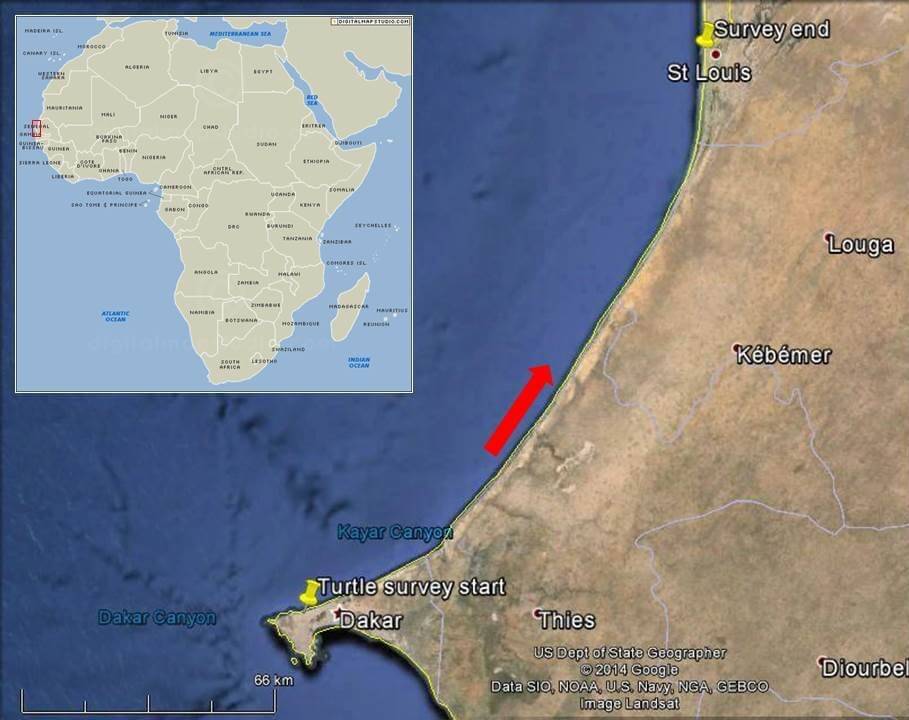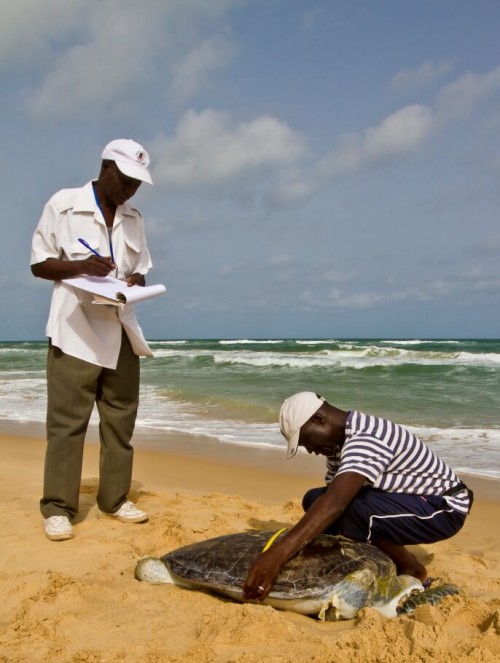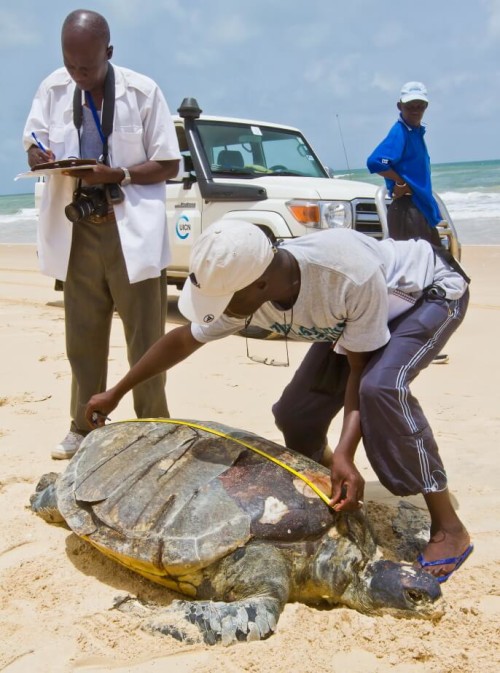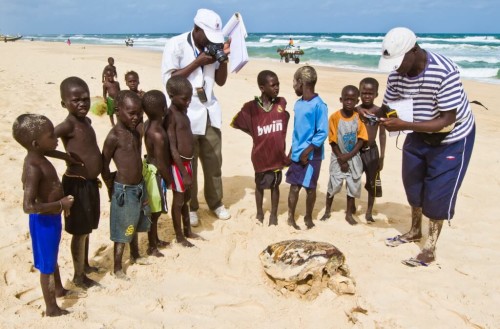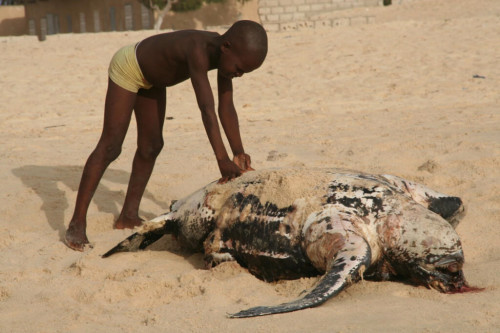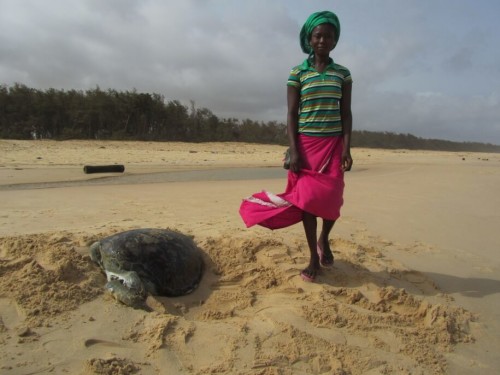Sea Turtle Mortality Assessment
Project Description
Senegalese coastline waters are a well known migratory hub for different species of sea turtles (Godley et al. 2003). All of the following species have been documented and are known to occur in the region: Chelonia mydas, Caretta caretta, Lepidochelys olivacea, and Dermochelys coriacea. However, very little work has been done to understand the numbers and seasonality of the different sea turtle species using this region. The habitat to be surveyed includes the northern coast beaches of Senegal from Dakar to St. Louis. African Chelonian Institute (ACI) has recently participated in beach surveys on the Atlantic coastline in the northern part of Senegal from Dakar to St. Louis, covering a total straight line distance of 184 km (see map). ACI led the sea turtle component of these surveys, while other team members surveyed for cetaceans, and logistics were provided by IUCN Senegal Office. The main objective of the 3 days of surveys was the first assessment of sea turtle and cetacean mortality along this remote and little developed coastline. The results were a astonishing 65 rotten sea turtle carcasses including Loggerhead, Green, Olive Ridley, and Leatherback turtles in various states of decomposition. The cause of this massive sea turtle mortality is related to bycatch, because offshore fishing activities are very intense in this region. ACI plans to take further action to document and reduce this tragic and unsustainable mortality for West African sea turtle populations. We are now planning to do coastal surveys in the same area every month for the next year, in order to more accurately document levels and possible seasonality of mortality. If we can raise more funds, we also hope to survey Senegal’s central and southern coast. If we can raise funds, we also hope to survey Senegal’s central and southern coast.
Goals and Expectations
The main goal of this project is to assess the high mortality of the following species on northern Senegalese beaches: Chelonia mydas, Caretta caretta, Lepidochelys olivacea, and Dermochelys coriacea. This project will collect and use the compiled data to advocate for the reduction of sea turtle bycatch in Senegalese fisheries, and to work with fisheries authorities to achieve this. Additionally, we plan to collaborate with sea turtle genetics researchers to understand which populations these turtles are from. This is the first time bycatch data for sea turtles will be accurately and routinely collected and analyzed for Senegal. We expect this work to begin to inform the scientific community, the Senegal fisheries authority, and other stakeholders about the extent of threats due to bycatch in the region. We hope to build on this initial study with future long-term studies to monitor bycatch rates, study the origin of the turtles using genetics, as well as implement new measures to protect sea turtles in Senegal.



